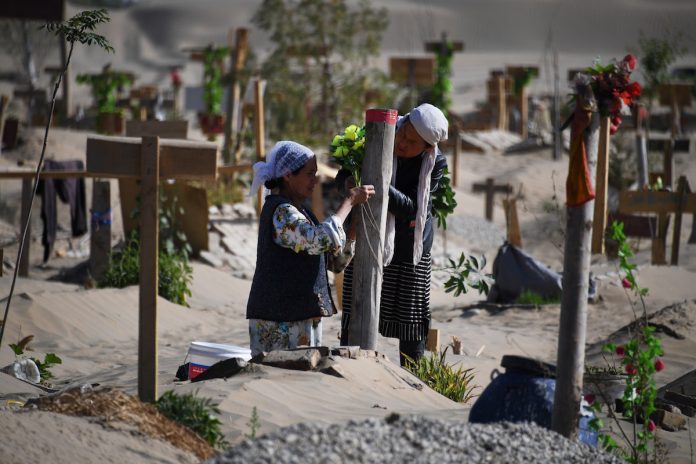CHINESE authorities have announced a plan to destroy a graveyard, considered sacred by Uyghurs in Urumqi, capital of the Xinjiang region in northwest China.
In a May 22 document, the bureaus of public affairs, building affairs, and land management informed residents that the cemetery would be dug up and moved on June 10.
The document ordered people with loved ones buried in the cemetery to register for the removal of the remains.
In a report by Radio Free Asia Uyghur Service, a woman at the Urumqi Ethnic Affairs Office confirmed that there is already an ongoing registration but the exhumation of remains had yet to begin.
The woman, who refused to be named, said relocating remains is yet to start and families of the deceased living outside the capital have to designate a representative on their behalf.
The report said the woman refused to give the reason why authorities decided to relocate the graveyard.
A Uyghur official from the Bulaqtagh Muslim Burial Affairs Office, who requested anonymity, said the registration for the removal of the remains is only until the end of May.
The official said people must take a photo of the grave’s headstone and provide them the plot number.
“We’re registering people — it’s been about a week already. You’ll take a photo of the number and bring it in, and we’ll get you registered. We’ll let you know about everything else after you come in,” the official said.
Without giving details on how the process of moving the remains would take place and the relocation area, the official said there are workers assigned to do the job.
She said the move was “a government decision” and that she does not know if authorities have plans to build something in the location of the cemetery.
“We’re only taking care of registration, so there are a lot of things we don’t know,” she said.
Experts claimed that the plan to destroy the cemetery is part of a campaign aimed at controlling the ethnic group.
An estimated 1.8 million Uyghurs, a predominantly Turkic-speaking ethnic group, and other Muslim minorities have been held by Chinese authorities in so-called “re-education or internment camps” since 2017.
The plan to relocate the cemetery in Urumqi came one month after a Uyghur graveyard in Hetian City was destroyed and turned into a car park.

A professor at the University of Nottingham in Britain had posted on social media a time-lapse view of the Sultanim Cemetery that showed grave plots have been gradually plowed over with dirt since last year.
The imagery also showed that a parking lot was erected in the western portion of the site.
Rian Thum, who posted the imagery, claimed that destroying sacred graveyards is part of the campaign of the Chinese government to control the Uyghur population.
The professor said these sites are “part of the historical landscape of the Uyghur region.”
In October last year, AFP reported that since 2014, at least 45 cemeteries in the Xinjiang region had been destroyed and 30 of which were razed since 2017.
The report said many of the sites were transformed into parks or parking lots. Some reports claimed that human remains were left at some of these sites.
The sacred Muslim cemetery in Urumqi is said to be “particularly important” for the Uyghurs in the districts of Bulaqtagh, Tikquduq, and Ayotkel.
In 2014, the local government had prohibited new burials saying that the cemetery had been encroaching on land that was marked for official use.









